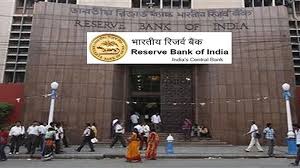It’s a story of braving eventualities to progress
Street Talk
Expert Opinion

When the world was celebrating April Fools’ Day to generate joy with pranks and jests, fostering bonds and laughter, the Reserve Bank of India (RBI), the country’s banking regulator stepped on its 90th year pedestal on April 1st, 2024. The celebration of this day was marked by the presence of Prime Minister Narendra Modi who attended the event to infuse a wave of appreciation and confidence among the stakeholders of this globally acclaimed banking regulator for its innovation and progress. Since its inception, the RBI amid all conditions has played (and continues to play) a vital role in maintaining the country’s economic stability, regulating the financial sector, and promoting digital innovations in the payments ecosystem.
Remarkably, the role of Reserve Bank of India, which commenced operations on April 1, 1935, has been hailed time and again for keeping the banking system afloat during rough times through its series of regulatory measures. Over the years, the RBI has seen 26 Governors, with the current Governor being Shaktikanta Das, who assumed office in October 2021. The RBI is an institution which has witnessed pre-as well as post-independence eras.
Remarkably, the Reserve Bank of India’s Governor Shaktikanta Das was honoured with the title of ‘Governor of the Year’ for 2023 by Central Banking in London. Central Banking is an international economic research journal. The award recognised his role as the RBI chief in managing inflation and skillfully handling India’s banking system during crises like COVID pandemic and global turmoil.
Our banking regulatory system got world attention when the global recession in 2008 saw many well-established banks globally disappearing from the banking scene. The apex bank’s prudent policies and regulations proved strong enough for being well-crafted to brave the impact of the global recession. Overall, our banking system survived the recessionary onslaught. During Covid-19 pandemic, the RBI played a yeoman’s role to keep the engine of the country’s banking system running so that the bruised economy remained afloat. In other words, the measures taken by the apex bank during the peak of Covid-19 crisis kept the common household budgets afloat and helped different segments of populations to negotiate the pandemic-induced economic crisis.
However, there have been some instances of bank failures in the country. Even as regulations are in place to protect depositors’ interests, some banks were unable to pay back the money to their depositors. The instances of crisis faced by Punjab and Maharashtra Co-Operative Bank Limited (PMC Bank), Yes Bank and Lakshmi Vilas Bank shook the confidence of the depositors. At the same time, the central bank capitalized on the situation and seized the opportunity to strengthen its regulations to retain the confidence of all stakeholders, especially the depositors.
One of the outstanding performances in the history of RBI has been its pivotal role in economic reforms in 1991 when the country was on the brink of facing economic disaster. Who can forget the economic mess owing to the widening fiscal deficit and growing Current Account deficit to dangerous proportions, which ultimately culminated into a full-fledged economic crisis in June 1991. Crudely speaking, India had run out of money. Gross official reserves stood at US$ 5.8 billion (1.3 months of imports) by end-March 1991. Inflation rose to 12.0 per cent.
This chaotic economic situation destabilized the political set-up and the country saw three prime ministers within a span of just one and a half years. V.P. Singh was prime minister of the country for just one year (December 1989 – November 1990). Chandra Shekhar took charge from V.P. Singh, but lasted just for six months (from November 1990 – June 1991). It was P. V. Narasimha Rao who became the third prime minister in just one and a half years’ time. His term from June 1991 to May 1996 proved a significant period for the country, especially on the economic front. The country witnessed massive structural economic reforms which changed the economic fortunes of the country. Here, it was the wisdom of the RBI backed by the then finance minister, Manmohan Singh which played a pivotal role in rolling out the new Economic Policy, 1991 loaded with Liberalization, Privatization and Globalization (LPG) initiatives.
Notably, in 1991, the country faced a balance of payment crisis due to the increasing pressure on foreign reserves. The RBI played a significant role in implementing these reforms, which included abolition of License Raj, reduction of import duties, liberalization of industrial licensing, and allowing foreign direct investment (FDI) in many sectors. As a result of these reforms, India’s international competitiveness increased in various sectors like auto components, telecommunications, software, pharmaceuticals, biotechnology, research and development, and professional services. Foreign investment in the country rose from US$132 million in 1991–92 to $5.3 billion in 1995–96. Poverty rates also decreased from 36% in 1993-94 to 26.1% in 1999-00.
Overall, these reforms helped India shift from a protectionist and regulated economy to a market-oriented one, leading to increased economic growth, job creation, and a rise in living standards.
Earlier, the nationalization of banks in 1969 was a significant contribution to the economic development of the country as the move aligned the banking system with the needs of economic policy. Besides, the move helped to achieve a more equitable distribution of resources, especially in the context of development, where banks played a significant role.
Today, the country’s banking system is resilient and progressive. Notably, in 2014 the banking system was facing challenges and problems like NPA and stability. However, during the period of last one decade the apex bank showed resilience and innovation to make the Indian banking system as a strong and sustainable banking system of the world. A capital infusion of 3.5 lakh crore was undertaken for the helping public sector banks along with many governance-related reforms. Just the Insolvency and Bankruptcy Code has resolved loans amounting to 3.25 lakh rupees. More than 27,000 applications involving underlying defaults of more than Rs 9 lakh crore were resolved even before admission under IBC. Gross NPAs of banks that stood at 11.25 percent in 2018 came down to below 3 percent by September 2023.
Precisely, the RBI actions directly make an impact on the lives of common citizens. Its role in shaping the country’s economy relentlessly has been remarkable. Be it customizing innovative policies or successfully navigating through uncertain times, the apex bank never failed to rise to the occasion. To be precise, the RBI has served (and continues to serve) as the custodian of a country’s economic welfare. At the back of its sterling record of its performance, we have fervent hope that the RBI will be once again at the forefront to pedal India’s growth story to achieve the goal of Viksit Bharat (developed India) in the next decade.
(The author is former Head of Corporate Communication & CSR and Internal Communication & Knowledge Management Departments of J&K Bank).


